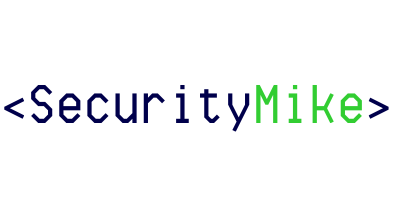In the world of cybersecurity, new threats are constantly emerging, and one of the latest to cause concern is Alphv, the newest version of BlackCat Ransomware. Ransomware is a type of malware that encrypts files on a victim’s computer or network, rendering them inaccessible until a ransom is paid. Alphv has been making headlines due to its sophisticated techniques and devastating impact on individuals and organizations.
Alphv is a highly advanced ransomware strain that has been designed to target both individuals and organizations. It is capable of encrypting a wide range of file types, including documents, images, videos, and databases. Once the files are encrypted, the victim is presented with a ransom note that demands payment in exchange for the decryption key. The ransom note typically includes instructions on how to make the payment and warns against attempting to decrypt the files without the key.
The impact of Alphv can be devastating for both individuals and organizations. For individuals, it can mean losing access to personal photos, documents, and other important files. For organizations, the consequences can be even more severe, as it can disrupt business operations and lead to financial losses. In some cases, organizations may be forced to pay the ransom in order to regain access to their critical data.
Key Takeaways
- Alphv is the latest version of BlackCat ransomware, which has evolved from its beta version.
- Alphv has unique features that make it different from other ransomware, such as the ability to encrypt files in offline mode.
- Alphv uses a sophisticated encryption technique that locks your files and demands a ransom for their release.
- Alphv spreads across networks through various distribution channels, including phishing emails and exploit kits.
- Alphv can have a significant impact on individuals and organizations, causing data loss and financial damage.
The Evolution of BlackCat Ransomware: From Beta to Alphv
BlackCat Ransomware has been around for several years, but it has undergone significant evolution since its initial release. The beta version of BlackCat was relatively simple compared to its latest iteration, Alphv. The beta version primarily targeted individual users and relied on basic encryption techniques.
Over time, however, the developers behind BlackCat Ransomware have refined their techniques and added new features to make it more effective and difficult to detect. Alphv represents the culmination of these efforts, with advanced encryption algorithms and sophisticated distribution methods.
Understanding the Features of Alphv: What Makes it Different from Other Ransomware
One of the key features that sets Alphv apart from other ransomware strains is its use of advanced encryption algorithms. Alphv uses a combination of symmetric and asymmetric encryption to lock the victim’s files. This makes it extremely difficult, if not impossible, to decrypt the files without the decryption key.
Another unique feature of Alphv is its ability to spread across networks. Once a system is infected, Alphv can scan for other vulnerable devices on the same network and attempt to infect them as well. This makes it particularly dangerous for organizations with multiple interconnected devices.
Additionally, Alphv has a built-in anti-analysis mechanism that makes it difficult for cybersecurity professionals to analyze and reverse engineer the malware. This makes it challenging to develop effective countermeasures and decrypt the files without paying the ransom.
Analyzing the Encryption Technique of Alphv: How it Locks Your Files
Alphv uses a combination of symmetric and asymmetric encryption to lock the victim’s files. When a system is infected, Alphv generates a unique symmetric encryption key for each file that is encrypted. This key is then encrypted using an asymmetric encryption algorithm and stored on the attacker’s server.
The symmetric encryption key is used to encrypt the contents of the file, while the asymmetric encryption key is used to encrypt the symmetric encryption key itself. This two-step process ensures that even if the victim manages to obtain the encrypted symmetric key, they would still need the private key held by the attacker to decrypt it.
The strength of the encryption used by Alphv depends on the specific algorithms and key lengths used. In general, modern encryption algorithms are extremely secure and can only be broken through brute force attacks, which are computationally infeasible for large key sizes. This means that unless the attacker makes a mistake or a vulnerability is discovered in the encryption algorithm, it is unlikely that the files can be decrypted without the decryption key.
The Distribution Channels of Alphv: How it Spreads Across Networks
Alphv can spread across networks through various distribution channels. One common method is through phishing emails, where the attacker sends an email that appears to be from a legitimate source, such as a trusted organization or individual. The email may contain a malicious attachment or a link to a website that hosts the malware.
Another distribution channel used by Alphv is exploit kits. These are software packages that contain known vulnerabilities in popular software applications. When a user visits a compromised website, the exploit kit scans their system for these vulnerabilities and attempts to exploit them to install the ransomware.
Alphv can also spread through infected USB drives or other removable media. When a user connects an infected device to their computer, the ransomware can automatically execute and begin encrypting files.
To prevent infection, it is important to be cautious when opening email attachments or clicking on links, especially if they are from unknown or suspicious sources. Keeping software and operating systems up to date with the latest security patches can also help protect against exploit kits. Additionally, using strong and unique passwords for all accounts and regularly backing up important files can mitigate the impact of a ransomware attack.
The Impact of Alphv: How it Affects Individuals and Organizations

The impact of an Alphv infection can be devastating for both individuals and organizations. For individuals, losing access to personal photos, documents, and other important files can be emotionally distressing. It can also result in financial losses if the victim decides to pay the ransom to retrieve their data.
For organizations, the consequences can be even more severe. Alphv can disrupt business operations, leading to financial losses and reputational damage. It can also result in the loss of sensitive customer data, which can have legal and regulatory implications.
In some cases, organizations may be forced to pay the ransom in order to regain access to their critical data. However, paying the ransom is not recommended, as it encourages the attackers and there is no guarantee that the files will be decrypted even after payment.
The Ransom Demands of Alphv: How Much it Costs to Retrieve Your Data
The amount of money demanded by Alphv varies depending on the attacker and the specific circumstances. Ransom demands can range from a few hundred dollars to several thousand dollars. The payment is typically requested in a cryptocurrency such as Bitcoin, which makes it difficult to trace.
Paying the ransom is a risky decision, as there is no guarantee that the attacker will provide the decryption key or that the files will be successfully decrypted even after payment. It also encourages further attacks and funds criminal activities.
The Prevention and Mitigation of Alphv: How to Protect Yourself from this Threat
Preventing an Alphv infection requires a multi-layered approach. Here are some best practices to protect yourself from this threat:
1. Keep software and operating systems up to date with the latest security patches.
2. Use strong and unique passwords for all accounts.
3. Be cautious when opening email attachments or clicking on links, especially if they are from unknown or suspicious sources.
4. Regularly back up important files and store them offline or in a secure cloud storage service.
5. Use reputable antivirus software and keep it up to date.
6. Enable automatic updates for all software applications.
7. Educate yourself and your employees about phishing scams and other common attack vectors.
If you suspect that your system has been infected with Alphv or any other ransomware, it is important to take immediate action. Disconnect the infected device from the network to prevent further spread of the malware. Report the incident to your IT department or a cybersecurity professional who can help mitigate the impact and potentially recover your files.
The Role of Cybersecurity Professionals in Combatting Alphv: How They Can Help
Cybersecurity professionals play a crucial role in combatting Alphv and other ransomware threats. They have the knowledge and expertise to analyze the malware, develop countermeasures, and assist with incident response.
Cybersecurity professionals can use various tools and techniques to prevent and mitigate Alphv attacks. This includes network monitoring, intrusion detection systems, and advanced threat intelligence platforms. They can also provide guidance on best practices for preventing infections and recovering from an attack.
In addition to technical measures, cybersecurity professionals can also help raise awareness about the risks of ransomware and educate individuals and organizations on how to protect themselves. By staying up to date with the latest threats and sharing this information with others, they can help create a more secure digital environment.
The Future of Alphv: What to Expect from BlackCat Ransomware in the Coming Years
The future of BlackCat Ransomware and Alphv is uncertain, but it is likely that we will see further evolution and sophistication in future versions. As cybersecurity defenses improve, attackers are constantly adapting their techniques to stay one step ahead.
It is possible that future versions of BlackCat Ransomware will incorporate even more advanced encryption algorithms, making it even more difficult to decrypt files without the decryption key. We may also see new distribution channels and attack vectors as attackers continue to innovate.
To stay protected against future versions of BlackCat Ransomware and other ransomware strains, it is important to remain vigilant and follow best practices for cybersecurity. Regularly updating software, using strong passwords, and educating yourself about the latest threats are all essential steps in protecting yourself from this evolving threat landscape.
If you’re interested in learning more about the latest cybersecurity threats and how to protect yourself, you might also want to check out this informative article on weak passwords and how they compromise your security. In a world where cybercriminals are constantly evolving their tactics, having a strong password is crucial to safeguarding your personal information. This article provides valuable insights and practical tips to help you create strong passwords and enhance your overall online security. Don’t miss out on this essential read! Click here to explore it further.
FAQs
What is Alphv?
Alphv is a new strain of ransomware that has been identified by cybersecurity researchers. It is also known as BlackCat ransomware.
How does Alphv infect computers?
Alphv typically infects computers through phishing emails or by exploiting vulnerabilities in software. Once it infects a computer, it encrypts the victim’s files and demands a ransom payment in exchange for the decryption key.
What makes Alphv different from other ransomware strains?
Alphv is unique in that it uses a combination of RSA and ChaCha20 encryption algorithms to encrypt victim’s files. It also has the ability to encrypt files on network shares, which can cause widespread damage in organizations.
What is the ransom demand for Alphv?
The ransom demand for Alphv varies, but it is typically in the range of several thousand dollars. The ransom payment is usually demanded in Bitcoin or other cryptocurrencies.
How can I protect myself from Alphv?
To protect yourself from Alphv, it is important to keep your software up to date and to be cautious when opening emails or clicking on links. It is also recommended to have a backup of your important files in case they are encrypted by ransomware.

